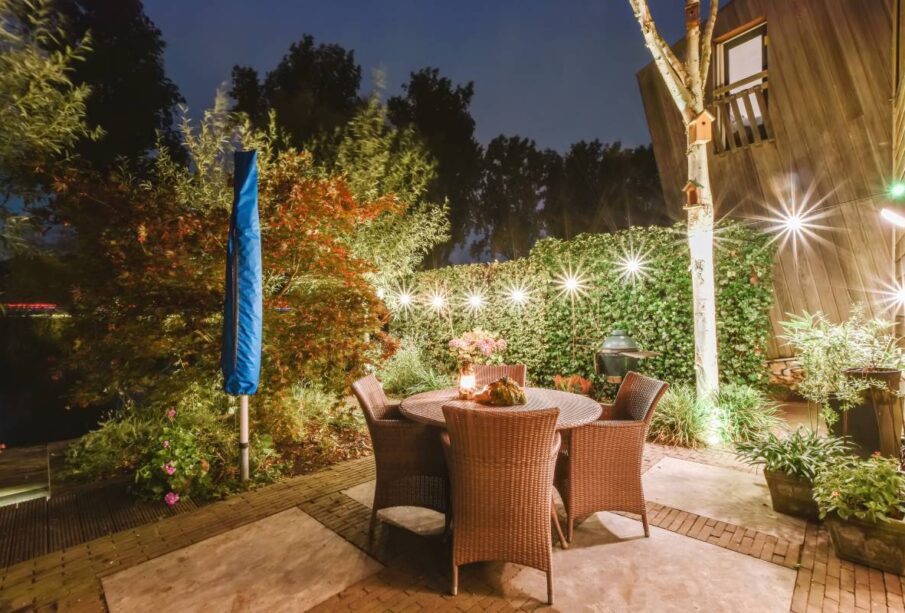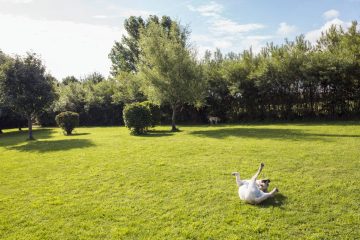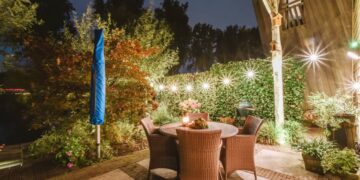How to Install Outdoor Lighting on the Central Coast Without Polluting Your Neighbours

Outdoor lighting can completely transform your home. It improves visibility, deters intruders, and highlights the beauty of your landscape. However, when poorly planned or installed, outdoor lights can cause glare, excessive brightness, or light spill — creating discomfort for your neighbours and contributing to light pollution.
On the Central Coast, where communities value scenic coastal views, stargazing, and relaxed outdoor living, it’s especially important to install lighting that enhances your property without disturbing others. Whether you’re illuminating a garden path or upgrading your patio, this guide will help you install outdoor lighting responsibly and efficiently.
Understand What Causes Light Pollution
Before diving into installation, it helps to know what light pollution really means. Light pollution occurs when artificial light spills beyond its intended area, brightening the night sky or intruding into neighbouring properties.
There are several types:
- Glare: Excessively bright light that causes visual discomfort or temporary blindness.
- Skyglow: The orange or white haze over cities caused by upward-facing lights scattering in the atmosphere.
- Light trespass: When light from one property shines into another person’s home or yard.
- Clutter: Overly bright or numerous lights that confuse the eye and disturb natural nightscapes.
Reducing these problems doesn’t mean you have to live in the dark. It simply means lighting smarter.
Start With a Plan
Good lighting design starts with purpose. Identify why you need lighting in each outdoor area.
- Safety: Lights for stairs, walkways, and driveways should ensure people can move safely after dark.
- Security: Floodlights or motion-sensor lights deter trespassers but don’t need to operate all night.
- Ambience: Garden lights and deck lighting create mood and atmosphere but should remain subtle.
Draw a rough map of your property. Mark key zones — such as the entrance, backyard, path, and fence line — and decide what type of lighting each area requires. This approach helps avoid over-lighting, which is one of the most common causes of neighbour complaints.
If you use smart controls, you can even group zones to adjust brightness and timing independently.
Choose the Right Fixtures
Lighting fixtures make all the difference between a well-lit home and a neighbourly nightmare. Choose shielded or full-cutoff fixtures, which direct light downward rather than outward or upward.
- Full-cutoff fixtures block light from escaping above the horizontal line of the fitting.
- Bollards and path lights with top covers guide light down onto the path.
- Wall-mounted sconces that shine downward can illuminate doors and entryways without glaring into neighbouring windows.
- Under-eave downlights work well for subtle, low-glare coverage.
By focusing the light exactly where you need it, you’ll reduce glare, save energy, and improve the overall look of your space.
Pick the Right Colour Temperature
The colour of your light affects not just the look of your home but also how intrusive it feels. Lights that are too cool (blue-white) scatter more easily in the atmosphere and can feel harsh to nearby residents.
Opt for warm white LEDs with a colour temperature between 2700K and 3000K. These produce a softer, golden tone that complements outdoor settings and minimises disruption to both neighbours and wildlife.
Warmer light also feels more inviting and helps your outdoor areas blend naturally into the night.
Control Brightness and Beam Angles
Excess brightness doesn’t equal better lighting. In fact, high-intensity lights often produce harsh glare and shadows. For most homes on the Central Coast, low to medium lumen output is sufficient.
Choose narrow beam angles for highlighting trees or architectural features, and wider beams for general illumination. Always check the brightness from your neighbour’s perspective — what looks perfect in your yard may shine directly into their living room.
To guide you, the Australian Standard AS/NZS 4282 outlines principles for controlling obtrusive lighting, including maximum light levels that may spill across property boundaries. While private homeowners aren’t usually legally bound by the standard, following it demonstrates consideration and compliance with good lighting practice.
Aim Lights Correctly
Even with the right fixture, incorrect aiming can ruin your lighting plan. Avoid pointing lights at reflective surfaces or directly toward property boundaries.
When installing:
- Point spotlights downward at the feature you want to illuminate.
- Avoid aiming lights higher than 45° above horizontal.
- Check the view from your neighbour’s side or fence line — if you can see the bulb directly, it’s likely too bright or misaligned.
Consider adding visors, hoods, or baffles to reduce stray light. These accessories are inexpensive and can make a huge difference in reducing light spill.
Use Motion Sensors and Timers
Motion sensors and timers are some of the easiest ways to prevent light pollution.
- Motion sensors activate light only when movement is detected — ideal for driveways and security lighting.
- Timers or smart switches ensure lights switch off automatically at designated hours.
Avoid setting sensors with excessive sensitivity that could be triggered by pets or passing cars. A well-calibrated system provides safety and security without annoying flickers or overuse.
Timers are especially useful for decorative lighting — set them to turn off by 11 PM to respect quiet hours and maintain dark skies.
Protect Local Wildlife and the Night Sky
The Central Coast is known for its stunning coastal ecosystems, native bushland, and clear night skies. Unfortunately, unnecessary lighting can harm nocturnal wildlife, including birds, frogs, and insects, which rely on darkness to navigate and breed.
To reduce environmental impact:
- Keep lights low and shielded to the ground.
- Use warm colours rather than bright white or blue tones.
- Turn off unnecessary lights overnight.
- Consider solar-powered, low-output options for decorative lighting.
Many councils across Australia — including those on the Central Coast — have begun upgrading public lights with warm, energy-efficient LEDs to reduce glare and protect natural environments. Following this example at home supports the same goals.
Communicate With Your Neighbours
Good lighting design is about more than fixtures — it’s about community courtesy. Before installing bright floodlights or landscape lighting, it’s a good idea to speak with your neighbours.
Explain your lighting plan, show where fixtures will point, and mention that you’re using timers or shields to avoid light spill. This proactive step can prevent complaints and build trust.
If a neighbour does raise a concern, take it seriously. Adjusting the angle or adding a simple hood may resolve the issue instantly.
In rare cases where disputes escalate, local councils usually recommend mediation before legal action. Most councils on the Central Coast treat light pollution as a civil matter but encourage residents to resolve it through communication and minor adjustments.
Check Council and Utility Guidelines
If you’re dealing with a public streetlight shining onto your property, you can often request shielding or repositioning through the council or the utility company, such as Ausgrid. Councils have processes for evaluating light spill complaints and may add shields or replace overly bright fittings upon request.
For private installations, check your local council’s planning guidelines. Some development control plans (DCPs) contain lighting recommendations for residential properties, especially in environmentally sensitive areas.
Installation Checklist
Here’s a quick recap for installing outdoor lighting that’s bright enough for safety but soft on your neighbours:
- Identify the purpose of each light (safety, security, ambience).
- Map out zones and choose appropriate fixture types.
- Use full-cutoff or downward-facing fittings.
- Select warm-white LEDs (2700–3000K).
- Keep lumen output moderate.
- Aim lights carefully — no upward angles.
- Add visors or shields where needed.
- Fit timers or motion sensors.
- Test your lighting at night from multiple viewpoints.
- Adjust or dim as necessary to minimise glare.
When to Call the Professionals
If you’re unsure about wiring, angles, or compliance, don’t take risks. Outdoor lighting involves electrical work, waterproof fittings, and occasionally, council regulations. A qualified electrician or lighting specialist can design and install your system to meet safety codes while achieving the aesthetic you want.
Professional electricians can also integrate smart systems, energy-efficient LEDs, and programmable controls — ensuring that your lighting remains both beautiful and neighbour-friendly.
Final Thoughts
Installing outdoor lighting doesn’t have to mean sacrificing peace or dark skies. With careful planning, shielded fixtures, and thoughtful positioning, you can illuminate your home effectively while being considerate of your neighbours and the natural environment.
The Central Coast’s coastal lifestyle deserves lighting that complements its beauty — not one that competes with it. A balanced, well-designed outdoor lighting plan brings warmth, safety, and style to your property, all while keeping the community harmonious and the night sky visible for everyone.
For professional installation and expert advice on designing efficient, eco-friendly, and neighbour-conscious outdoor lighting systems, contact Reds Power Solutions in Central Coast — your trusted local experts in safe and sustainable electrical solutions.













